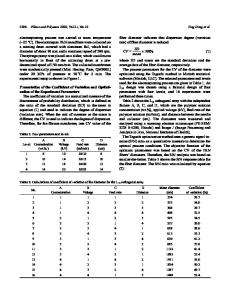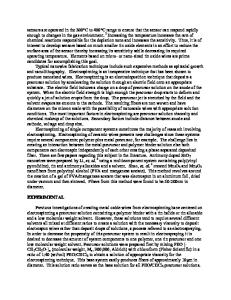Silk apatite composites from electrospun fibers
- PDF / 2,165,239 Bytes
- 11 Pages / 612 x 792 pts (letter) Page_size
- 81 Downloads / 287 Views
Hyoung-Joon Jin Tufts University, Departments of Biomedical Engineering, Chemical and Biological Engineering, and Bioengineering Center, Medford, Massachusetts 02155; and Inha University, Department of Polymer Science and Engineering, Incheon 402-751, South Korea
Gregory D. Botsaris and David L. Kaplana) Tufts University, Departments of Biomedical Engineering, Chemical and Biological Engineering, and Bioengineering Center, Medford, Massachusetts 02155 (Received 30 May 2005; accepted 30 August 2005)
Human bone is a three-dimensional composite structure consisting of inorganic apatite crystals and organic collagen fibers. An attractive strategy for fabricating mimics of these types of composite biomaterials is to selectively grow apatite on polymers with control of structure, mechanical properties, and function. In the present study, silk/apatite composites were prepared by growing apatite on functionalized nanodiameter silk fibroin fibers prepared by electrospinning. The functionalized fibers were spun from an aqueous solution of silk/polyethylene oxide (PEO) (78/22 wt/wt) containing poly(L-aspartate) (poly-Asp), which was introduced as an analogue of noncollageous proteins normally found in bone. Silk fibroin associated with the acidic poly-Asp and acted as template for mineralization. Apatite mineral growth occurred preferentially along the longitudinal direction of the fibers, a feature that was not present in the absence of the combination of components at appropriate concentrations. Energy dispersive spectroscopy and x-ray diffraction confirmed that the mineral deposits were apatite. The results suggest that this approach can be used to form structures with potential utility for bone-related biomaterials based on the ability to control the interface wherein nucleation and crystal growth occur on the silk fibroin. With this level of inorganic–organic control, coupled with the unique mechanical properties, slow rates of biodegradation, and polymorphic features of this type of proteins, new opportunities emerge for utility of biomaterials.
I. INTRODUCTION
Bone is a three-dimensional composite consisting primarily of inorganic apatite crystals and organic collagen fibers. This structure is assembled through the orderly deposition of apatite minerals within a type I collagenous organic matrix. The crystallographic c axis of the apatite is oriented to the long axis of the collagen fibrils. This composite and the basis for its formation and function have attracted a great deal of interest from a fundamental materials science and engineering perspective to biomimetic approaches to the formation of bonelike substitutes. Alternative strategies to form these types of
a)
Address all correspondence to this author. e-mail: [email protected] DOI: 10.1557/JMR.2005.0425 3374
http://journals.cambridge.org
J. Mater. Res., Vol. 20, No. 12, Dec 2005 Downloaded: 20 Aug 2014
composite structures could provide routes to new materials with useful mechanical and biological properties. A key aspect to this process is the mo
Data Loading...











